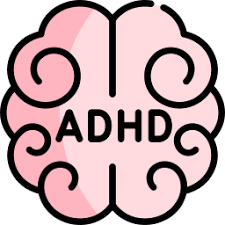Understanding Bipolar Disorder and Medications That Help

Strong 8k brings an ultra-HD IPTV experience to your living room and your pocket.
Bipolar disorder is a complex mental health condition that involves episodes of depression, mania, hypomania, or mixed states. Managing this condition often requires a combination of medication, therapy, and lifestyle adjustments. In this guide, we’ll focus on bipolar medications on how they are chosen, when they are used, and what to expect from treatment.
Why Medication Matters in Bipolar Treatment
Medications play a crucial role in both managing acute mood episodes (mania or depression) and preventing future relapses. However, the treatment approach depends on several factors:
• Current mood phase: Are you in a manic, depressive, mixed, or stable state?
• Severity: How urgent or impairing is your condition?
• Treatment history: What medications have worked or caused issues in the past, either for you or a close relative?
Now let’s explore how medications are selected based on the phase of bipolar disorder.
Medications for Mania and Hypomania
If a person is experiencing euphoric mania or hypomania, the first line of treatment typically includes:
• Atypical antipsychotics: Geodon, Abilify, Risperdal, Seroquel
• Mood stabilizers: Lithium, Depakote
If one medication doesn't fully work or causes side effects, providers may:
• Switch to another in the same class
• Combine two medications for a stronger effect
For treatment-resistant mania, providers may use:
• Second-line medications: Zyprexa, Tegretol, Trileptal, Clozaril, or older antipsychotics like Haldol
• Electroconvulsive therapy (ECT): Reserved for severe or nonresponsive cases
Treating Mixed Episodes
In mixed states where manic and depressive symptoms coexist, treatment follows a similar strategy to mania. However, medications like Seroquel and lithium are usually avoided early on due to reduced effectiveness in these cases. Providers may also add Lamictal early to address depressive symptoms.
Medications for Bipolar Depression
Bipolar depression is particularly challenging and often requires a distinct treatment approach. Here’s a common sequence used:
1. First-line: Lamictal (lamotrigine), especially if already on a mood stabilizer
2. Next steps if Lamictal are not enough: Seroquel or Zyprexa/Prozac (Symbyax) combination
3. Further options: Combinations involving Lamictal, lithium, and Seroquel
4. Other medications with less research backing: Depakote, Tegretol, Trileptal, traditional antidepressants, Mirapex, stimulants, inositol, thyroid supplementation, and ECT
How a Psychiatrist Chooses Medication
Let’s take a closer look at how providers make these decisions.
Example: A Patient in a Manic Episode
If someone presents with mania in an outpatient setting (and does not need hospitalization), a psychiatrist might start with Geodon. It’s often chosen because:
• It works quickly
• It has one of the lowest risks of weight gain
• It avoids major metabolic side effects
However, Geodon can cause temporary, treatable muscle side effects in about 25% of patients. Providers typically prepare patients for this possibility with education and supportive medications.
If Geodon isn’t tolerated or effective, a psychiatrist might try:
1. Abilify
2. Depakote
3. Risperdal
4. Seroquel
5. Lithium
6. Tegretol or Trileptal
Treating Irritable or Dysphoric Mania
When mania is presented as irritable rather than euphoric, lithium is often less effective, and Lamictal may be added earlier to address depressive symptoms.
How Bipolar Depression is Treated in Practice
In most cases, treatment for bipolar depression starts with Lamictal. If the person is already taking a mood stabilizer, it’s typically continued. If they’re on a traditional antidepressant, the goal is often to gradually phase it out.
Bipolar Depression Medication options must be carefully chosen to avoid triggering manic episodes and to ensure long-term mood stability.
Why? Traditional antidepressants can:
• Trigger manic or hypomanic episodes
• Increase long-term mood instability
• Show limited effectiveness (only about 20% of bipolar patients benefit without mood worsening)
If Lamictal Isn’t Enough
The next medication considered is often Mirapex (pramipexole) due to its:
• Low risk of weight gain
• Minimal sexual side effects
• Emerging evidence in bipolar depression
If Mirapex fails, then medications skipped earlier such as Seroquel, Zyprexa/Prozac, lithium, or Depakote may be revisited. ECT, stimulants, thyroid therapy, MAOIs, or newer antipsychotics may also be considered.
The Role of Therapy and Support
Medication is just one piece of the puzzle. Cognitive Behavioral Therapy (CBT) and individual psychotherapy significantly improve outcomes. In addition, many patients benefit from:
• Psychoeducation
• Bipolar support groups
• Lifestyle changes (sleep, exercise, nutrition)
Should You See a psychiatrist?
Yes. Because bipolar disorders, especially bipolar depression, are so complex, psychiatric expertise is often essential. Psychiatrists are trained to:
• Select the right combination of medications
• Monitor for side effects
• Adjust treatment plans based on your specific needs
They also stay current on new bipolar medications, emerging therapies, and advanced interventions.
Final Thoughts
Bipolar disorder is highly treatable, but it requires a personalized approach. Whether you're facing mania, depression, or a mixed episode, the right medication combined with therapy and support can restore balance and stability to your life.
Bipolar medication plays a key role in managing mood swings and preventing relapses, especially when tailored to an individual’s unique symptoms and history.
If you or a loved one is struggling with symptoms of bipolar disorder, don’t hesitate to seek professional care. The right help can make all the difference.
Note: IndiBlogHub features both user-submitted and editorial content. We do not verify third-party contributions. Read our Disclaimer and Privacy Policyfor details.







